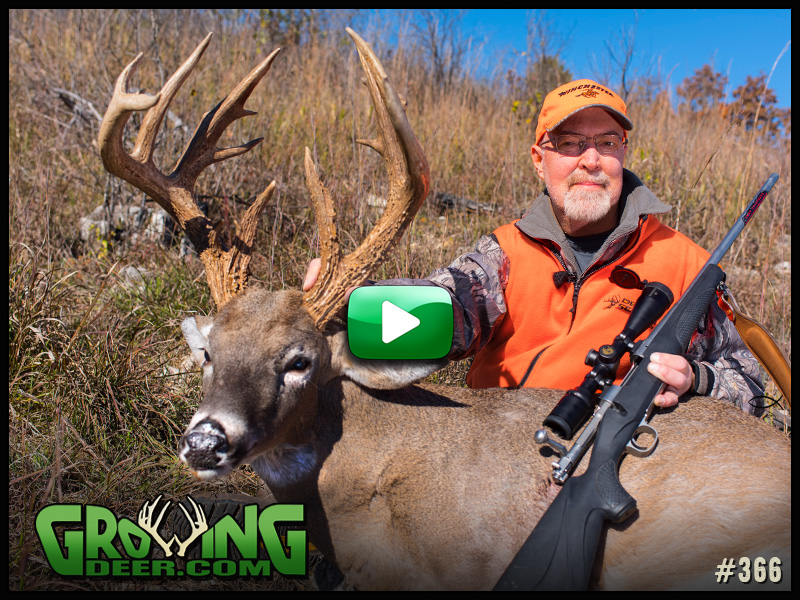Category: Hunting Blog
How Trail Cameras Can Be Useful Throughout All Seasons
We leave our Reconyx trail cameras out year around. This allows us to learn much more than deer travel patterns and current antler size. For example, one of our cameras recently took these photos in sequence. The camera that took these photos was located on the downhill side of a bedding area. Even during the summer, thermals carry scent downhill as the evening air cools.
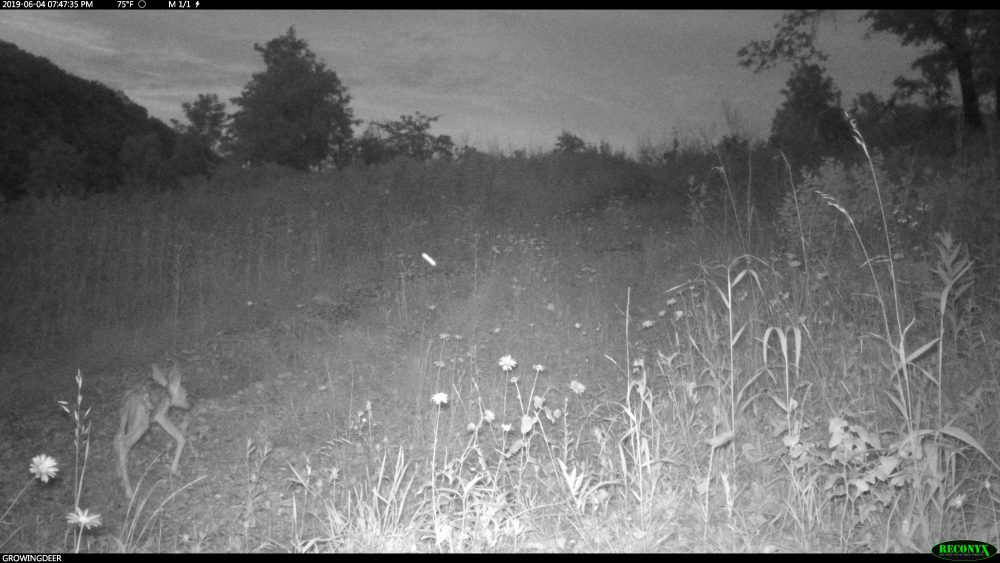
Based on these pictures, it seems likely that this fawn bedded toward the bottom of the bedding area and not far from the interior road’s edge. Just a few hours later there is a coyote and a doe (possibly the fawn’s mother) in the same area. We don’t know exactly what happened but this is a strong reminder of how predators hunt. They often cruise the downhill side of area where prey will be at that time of day. Coyotes are well documented as extremely effective fawn predators. This is why we trap yearly to help balance the number to predators with prey species and work hard to provide quality fawning and nesting habitat. (The Reconyx trail cameras picked up a video of this fawn. You may watch it HERE.)
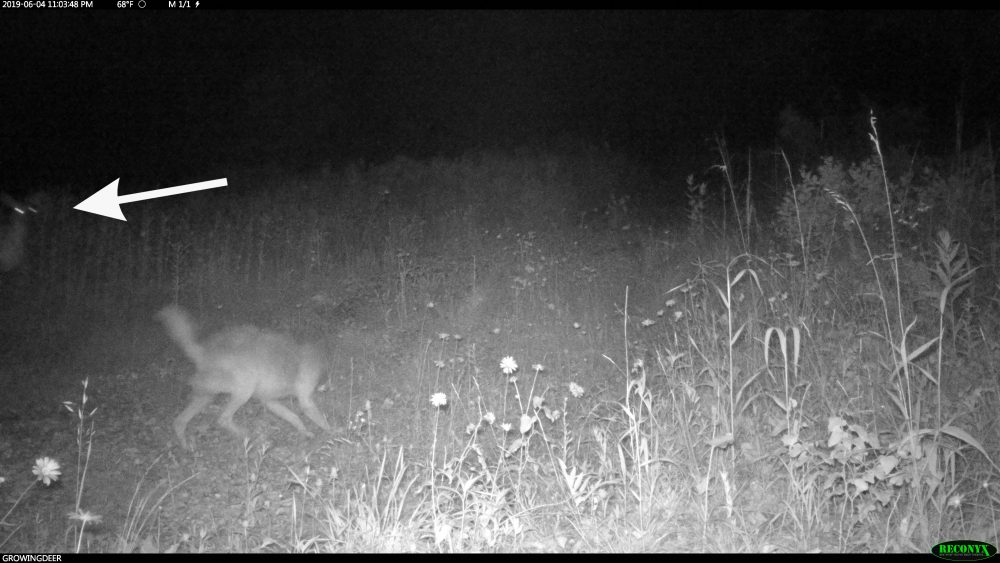
Two-legged hunters can learn from this series of images. We need to approach, hunt, and exit from the downwind side of where deer are likely to be while we are hunting. Using trail cameras throughout the year and moving them frequently is a great way to find stand/blind locations and learn from the best predators!
Enjoy Creation,
Grant
Why Fence Forage? Save It Now for Hunting Later!
We recently put up a Hot Zone Deer exclosure. This is a solar-powered two-layer electric fence that excludes deer from quality forage. We put this fence in a food plot we call Second House to exclude deer from browsing on some recently planted Eagle Seed forage soybeans.
Some folks ask why I would plant a food plot and then keep deer from feeding on a portion of it. The answer is simple. This technique creates great hunting opportunities. Deer are often very comfortable feeding in a small-sized plot. If the forage planted in the plot is very palatable to deer, they can limit its production or even consume all the forage before hunting season.
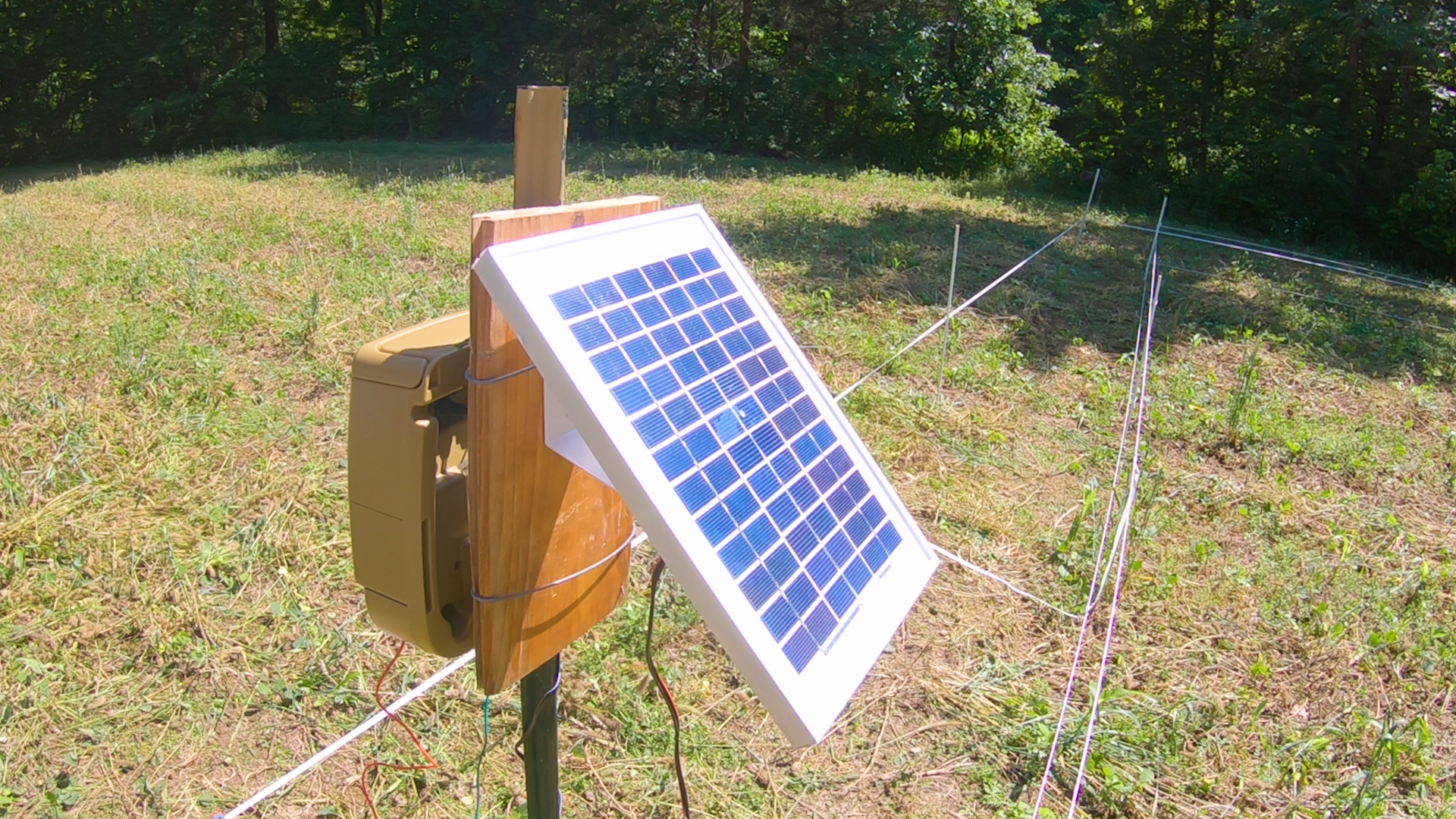
Protecting some or all of the forage in the plot from deer browse until I wish to hunt that area is a great way to create a bottleneck and stand or blind location.
I’ve used this technique for years and am always impressed with the difference in the quantity of food where it’s been protected versus outside the Hot Zone where deer have browsed.
This technique works on 5 or 5,000 acres and is an easy way to pattern deer for trail cameras and/or hunting! To see details on how to protect your own food plots check out this recent episode.
Enjoy Creation,
Grant
Why We’re Not Getting Busted While Deer Hunting
During a recent rainy day after Missouri’s firearms season closed I washed my hunting clothes and then stored them in a Scent Crusher bag. I’m back to bow hunting again after eight straight days of wearing the same clothes during gun season (except the under layer) and am 100% confident my clothes are ready for hunting.
Why am I so confident? Because for two years my team and I have used this system and know it works great! We’ve had more successful downwind encounters than before we started using these techniques to remove odors from our clothes!
We used to clean them with a washing machine that was dedicated just to hunting clothes and only dry them outside. This took a lot of time and we could only dry clothes during sunny days. Once we switched to using the combination of D/Code and Scent Crusher I tested using the family washing machine (inside and much warmer to use during the late season) and dryer versus a separate washer and hanging the clothes outside. I wanted to do this because I was tired of spending a huge amount of time doing laundry and struggling to get clothes dry during the late season when days are short and often my wet clothes would freeze.
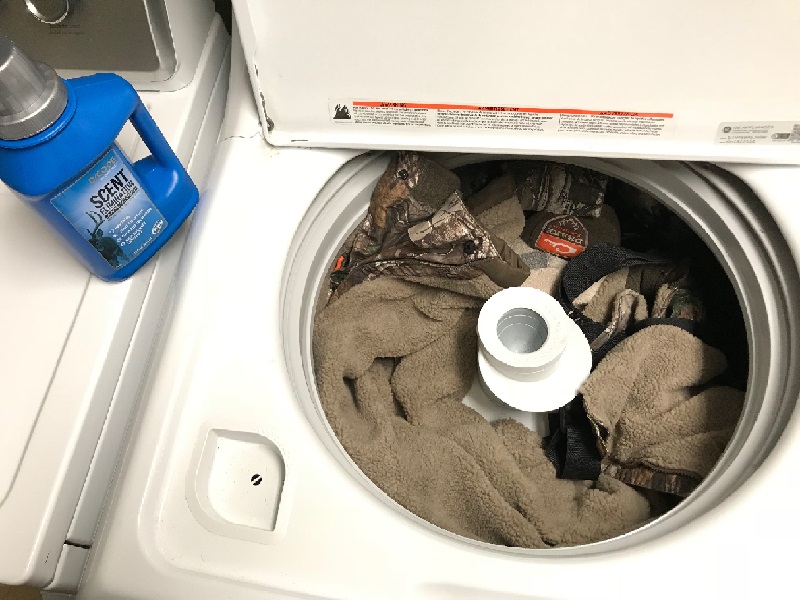
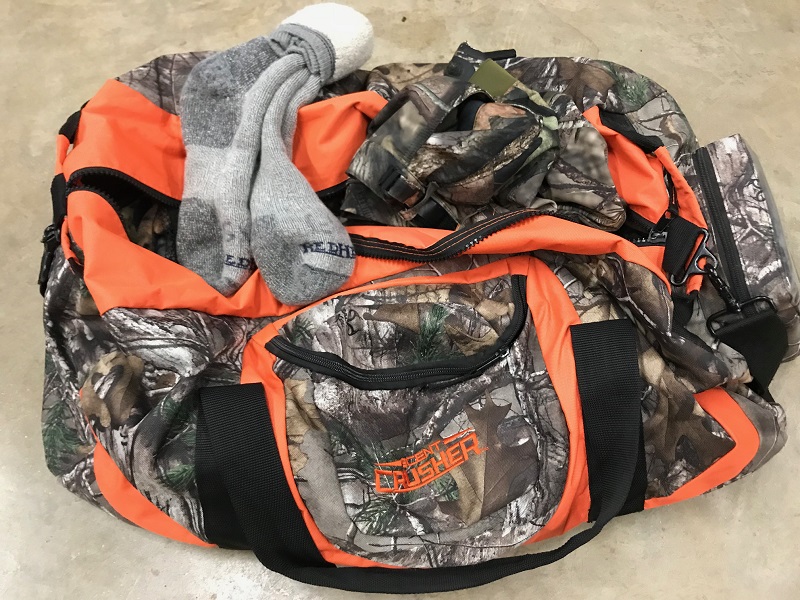
My team and I seem to get busted much less now than when we used other products and spent much more time doing laundry. Sometimes trying a new technique is worth the risk. In this case the reward is more venison!
Enjoy Creation,
Grant
Hunting During the Lockdown Phase
I was blessed to tag a good buck during the 8th day (11/18) of Missouri’s firearms season. Many Missouri hunters have commented that they didn’t see many mature bucks during the first part of Missouri’s firearms season even though the weather conditions were good. I believe the season opening date may explain part of the perceived lack of buck movement.
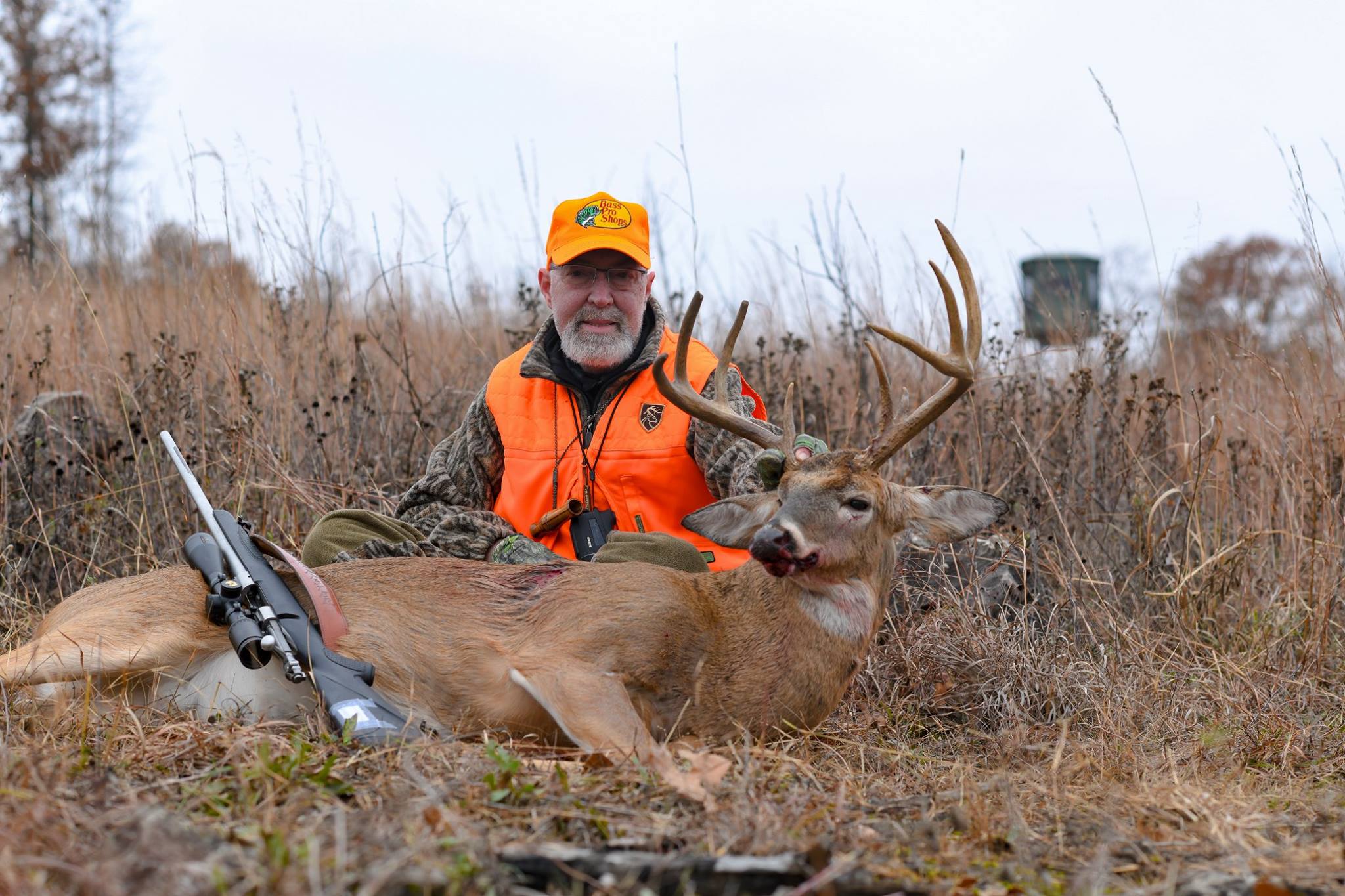
The season here has been opening a day earlier each year for the past several years. This year it opened earlier than it has in the previous six years. (In 2019 it will likely open November 16th – six days later than this year.) During the years Missouri’s firearms season opens earlier it coincides with when most does are receptive. This means most bucks will be tending does and not traveling frequently seeking does.
During the peak of breeding (the rut) it’s tougher to see mature bucks than just a few days before or after when most mature bucks are seeking does. It can be trying on any deer hunter’s patience. Many folks commented that they saw more mature bucks cruising during the last few days of the season.
If you still have a buck tag the first few days of archery season, after the firearms season closes may provide an excellent opportunity to tag a mature buck as they are once again seeking receptive does. In addition, some of the best opportunities to tag a mature buck occurs during the late season, especially if you have access to hunt areas that have quality food that time of year.
I have one buck tag left in Missouri and I’m eager to return to the woods during the late archery season!
Enjoying Creation from a deer stand,
Grant
When Deer Hunting Keeps You Busy
The GrowingDeer Team has been spending every morning and afternoon in the deer stand. These long days have made writing a blog a lower priority. I’m sure every deer hunter reading this can relate.
Since everyone is busy in the heat of intense deer hunting, instead of a blog about tactics for the rut, I’ve created this list of a few of our more popular rut hunting videos. For varieties sake, these videos span almost 10 years of hunts.
If you’re hunting this week or if you’re just hanging out with family for the Thanksgiving holiday, perhaps these videos can provide ideas or tactics to use in your next hunt.
As always, thanks for watching GrowingDeer. We hope that you’ll check us out on social media, join the conversation with other hunters and share photos of your hunting success.
Happy Thanksgiving,
Tracy Woods
To watch a video, click on the underlined title.
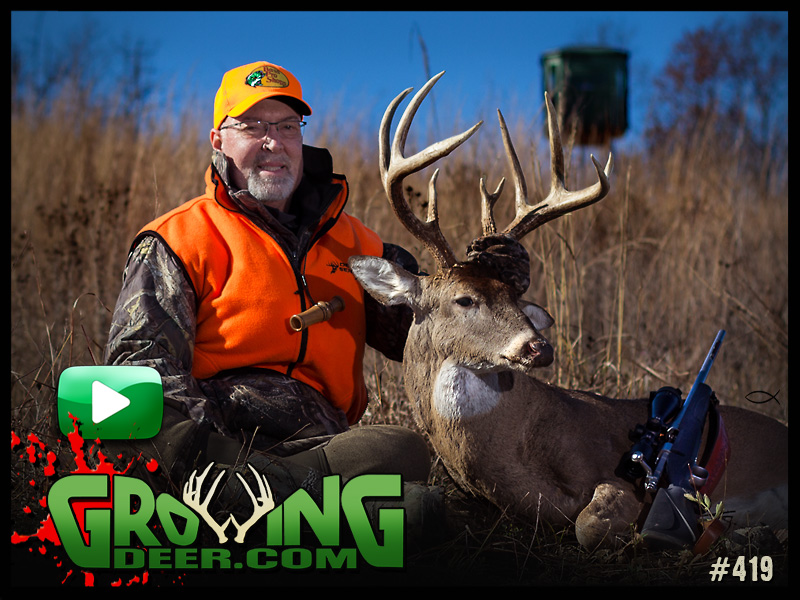
Deer Hunting the Rut: Lock Down Location (Episode #419, Dec. 2017)
Deer hunting during the lock down phase of the rut requires a change of strategies. In this hunt, see the full story of how this hunting location was developed and the strategies used to pull together a successful hunt: location development and selection, the lure of a dead doe, multiple bucks chasing, field judging a buck’s age, and more! Watch the story and see Grant tag the hit list buck “Head Turner!”
Deer Hunting Mission Accomplished: Tagging Handy (Episode #366, Nov. 2016)
In this deer hunt, Grant set out with a mission to tag Handy, the buck that was at the top of the 2016 hit list. Watch this video to see the story of Handy and the final hunt unfold. It’s a great story with lots of lessons learned while hunting.
4 Super Bucks Down, Rut!! Deer Hunting Strategies That Worked! (Episode #315, Dec. 2015)
Four hunters with four super bucks shot during rifle season in Missouri and Kentucky! The first hunt is Dr. Grant Woods who puts together a plan to hunt a buck based on his expected travel patterns. Then three more hunts from a Kentucky property that is now producing big bucks after just a couple of years of sound deer management and habitat improvement.
Deer Hunting | Perfect Combination of Cold Weather and Rut Action! (Episode #261, Nov. 2014)
The rut action heats up as the weather cools down for the best deer hunting of the season! Grant has a hot stand location between acorns and a bedding area where he takes a doe while bow hunting. Then on opening day of gun season, Rae Woods scores again – this time on a nice buck!
Hunting the Rut: Prime Time for Deer Hunting! (Episode #258, Nov. 2014)
Hunting the different phases of the whitetail rut: where, how, and why for improved success in tagging a mature buck.
Hunting Whitetails in The Rut: Patience and Endurance (Episode #209, Nov. 2013)
It’s the rut and bucks are chasing does everywhere! In this episode 15-year-old Raleigh has an encounter with a shooter buck that needed to take just one more step! (1:00 to 2:19) Then Adam and Heath both go to Northern Missouri during prime time of the rut and it’s well worth the trip! See Adam’s hunt as he makes shoot/don’t shoot decisions on several bucks (2:24 to 5:48). Heath self-filmed his hunts and is rewarded with lots of buck activity. A shooter buck comes into bow range on the final day of the hunt. Watch this video and see the great job Heath does at self-filming and tagging a nice buck! (6:05 to 12:21).
Deer Hunting: First Buck Kill During The Chase Phase Of The Rut (Episode #104, Nov. 2011)
Hunting deer during the first week of Missouri’s gun season and a big buck comes out! It’s a hunt we won’t forget! It took a lot of work to get ready for this hunt, but all the work and planning this past summer paid off big dividends. Watch this episode (in the stand at 01:57 and the kill shot at 05:50) to see a nice buck killed with a long shot of 267 yards. I love it when a plan comes together!
Strategies for Hunting the Current Stage of the Rut
I’ve been hunting almost daily since the beginning of deer season. I have seen a lot of deer, but not a buck I wish to tag within range. That’s OK because I really enjoy watching and learning from deer. I hunt in the Ozark Mountains in southern Missouri. The rut peaks (biggest number of does receptive at one time) here during the next two weeks. My observations and strategies will apply to folks that hunt where the rut is on the same timeframe. I realize deer have finished rutting at some locations and are not close to starting at other locations. However, throughout the majority of the whitetail’s range the rut will peak during the next two weeks.
Based on those observations I’ll share my hunting strategies for the next few days.
- Bucks are still using scrapes, especially along travel corridors. Bucks aren’t using scrapes on the edges of fields and food plots as much. This is because they are focused on seeking receptive does rather than feeding during this stage of the rut.
- Most bucks, especially mature bucks, are not on a food cover pattern. Where any buck will be is very tough to predict during this week because their pattern can change in an instant if they detect a receptive doe.
I will be bow hunting today; tomorrow firearms season opens in Missouri. So, my strategy today will be much different than tomorrow.
Today I will seek stands in known travel corridors. Those are difficult to find in the mountain habitat that I hunt because it’s 90+ percent timber and cover. It’s much easier to find travel corridors and bottlenecks in ag country where cover is limited and bottlenecks are easy to find by simply studying aerial images.
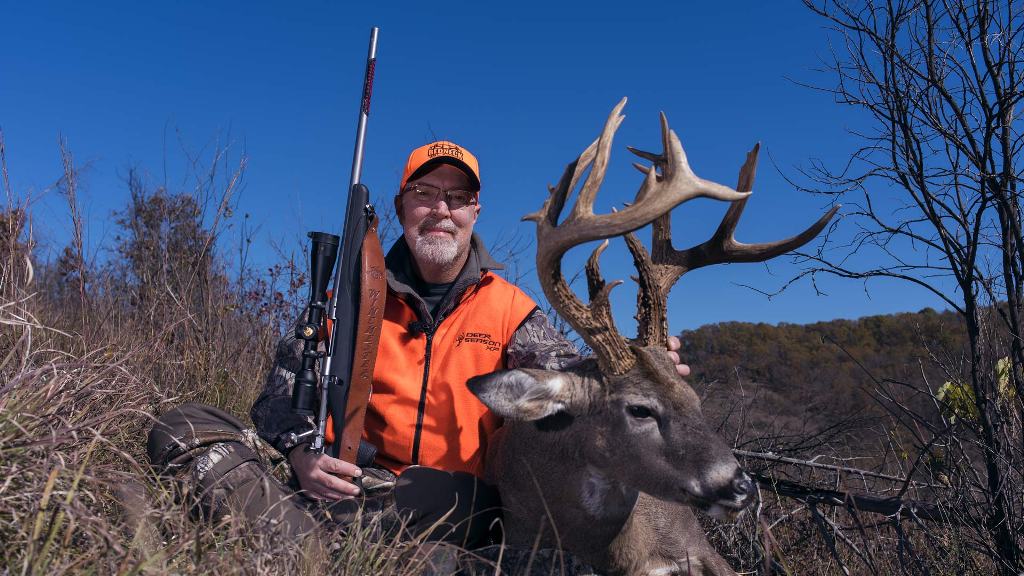
Tomorrow I’ll be carrying my Winchester and my odds will be best where I can use its effective range. At my place that means watching powerline easements or large areas where there is native grass rather than timber.
Utility easements, or other long linear openings, offer hunters a view into cover without disturbing deer. I simply approach from the downwind side and pick a spot where I think or know deer are crossing. This is an excellent stand/blind location for hunting and learning where deer prefer to travel (travel corridors!).
It seems receptive does will often seek thick cover when they are receptive to avoid being pestered by multiple bucks. Years ago, I cut all the cedars on a 25+ acre hillside and used prescribed fire to encourage native grasses and forbs to grow. Native grasses provide deer great cover but due to the slope I can see into the cover over most of the hillside. This is perfect. The deer are extremely comfortable in this habitat and I can observe them. Through the years I have watched bucks tend many receptive does in that area. I placed a Redneck Blind overlooking this area and have tagged many bucks from it. That’s likely where I’ll be hunting tomorrow morning. I’ll keep you posted on our social media.
I hope these strategies help and that you enjoy Creation!
Grant
Strategies for Grunt Calling Throughout the Season
Just a couple of weeks ago while hunting, I saw a four-year-old buck we call HighRiser and a younger buck enter a food plot about 100+ yards from my stand. It was near the end of shooting light so I took out my Messenger grunt call and grunted to see if HighRiser would come on in for a shot before dark. HighRiser looked my way after the first call. I called again and he took a few steps my way. I called more aggressively and HighRiser started towards the stand. The more I called, it was easy to see from HighRiser’s behavior and posture he was becoming aggressive. Both HighRiser and the younger buck came within range but a tree canopy blocked my shot. It was a very fun hunt! (You can see that hunt by clicking here.)
It’s because of responses like this that the Messenger grunt call is one of my favorite tools for deer hunting. During the early season I set it to the highest pitched setting. Both bucks and does will often respond to this pitch. I only call during this time of year when I see deer that do not appear to be coming within range. In addition, I start with a very low volume and work up till the deer indicate they’ve heard the call. I rarely call after they’ve responded with a look, etc. Using this strategy, I’ve watched groups of does and fawns respond as well as bucks.
As scrapes heat up and at the beginning of the pre-rut I switch my Messenger to the middle setting and use it a bit more aggressively. I don’t call to does as much at this time of year as they can be leery of bucks that are pestering them. I do call to bucks – often more than once. I will grunt lightly multiple times after the buck or bucks have shown signs of hearing the call. If the buck is coming my way I don’t call. If he stops, I will call again just loud enough for him to hear the call. Watching the behavior and posture of the buck determines how much more I use my call.
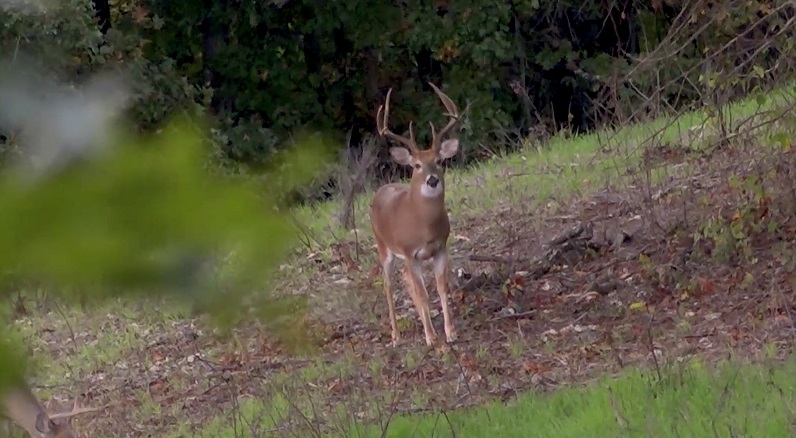
Once the pre-rut is in full swing I use the call very aggressively. I’ll even blind call (call without seeing a buck). The one time I don’t call is when I see a mature buck tending a doe. The doe will often go the other way and the buck will follow. It’s as if she’s being pestered by one buck and doesn’t want to be around another to add to her troubles.
Once most does are receptive and the rut (breeding) is in full swing, I will grunt at any buck I see cruising UNLESS they appear to be coming within range. I’ve seen buck’s respond from long distances. I blind call about every 15 to 30 minutes to pull in those bucks that might be in the vicinity of the sound but outside my range of vision
Using the middle setting on a Messenger grunt call communicates that a young buck is tending a doe possibly causing other young bucks and mature bucks to respond. Don’t over call, but a single grunt or two when blind calling will let bucks within hearing range know there’s a receptive doe nearby and they will usually come check it out.
Be careful to not call to bucks that will likely approach from the downwind side. Such bucks may bust you before they get within range. This is true throughout the season. This means the timing of when to call depends where the buck will likely approach. I’ve let bucks travel past me so they wouldn’t swing downwind when responding.
I use this same strategy throughout the rest of the season. I tend to to call more often as the season progresses. However, even a month or more after the peak of breeding bucks will still respond to grunts which indicate a receptive doe is in the area.
The third setting replicates the sound of a mature buck. I only use this if I see a mature buck and he won’t respond to the middle setting. When a mature buck responds to this call, be ready. He’s likely committed to coming in close!
Check out our clips page for Reconyx trail cam videos of bucks grunting and practice to mimic their sounds. You can start with the video here where a young buck grunts while chasing a doe.
I’ve tagged many bucks and does due to calling. It’s a very exciting and effective way to hunt! I hope these grunt calling strategies work for you, too. For more tips, watch the video at this link.
Enjoy Creation,
Grant
When Will the Rut Be This Year?
I’ve heard many theories about what determines the timing of the rut. Most of these theories are based on assumptions that whitetail breeding is triggered by a specific phase or characteristic of the moon’s orbit. More than a decade ago the “timing of whitetail breeding is related to a phase of the moon” theory was brutally murdered by a ruthless gang of facts.
This ruthless gang was composed of more than a dozen researchers from five different universities that analyzed data from known breeding dates of >2,500 does from populations in South Carolina, Texas, Mississippi, Missouri, Maine, Minnesota, and Michigan, with between 3 and 19 years of data for each population. That’s the equivalent of these researchers being armed with several nuclear warheads. You simply don’t argue with a force who has that kind of firepower.
I’ll save you all the statistical analysis and simply say they didn’t find any relationship between annual mean breeding dates and any phase of the moon.
Based on this and other research projects, I don’t schedule my hunts based on a specific moon phase. Weather conditions definitely can impact the amount of daytime deer activity – but not when deer breed. If you are using weather to schedule hunts there is a problem in that the forecast is rarely very accurate more than three days in advance. That’s not much help when trying to determine which week to take off from work several months in advance.
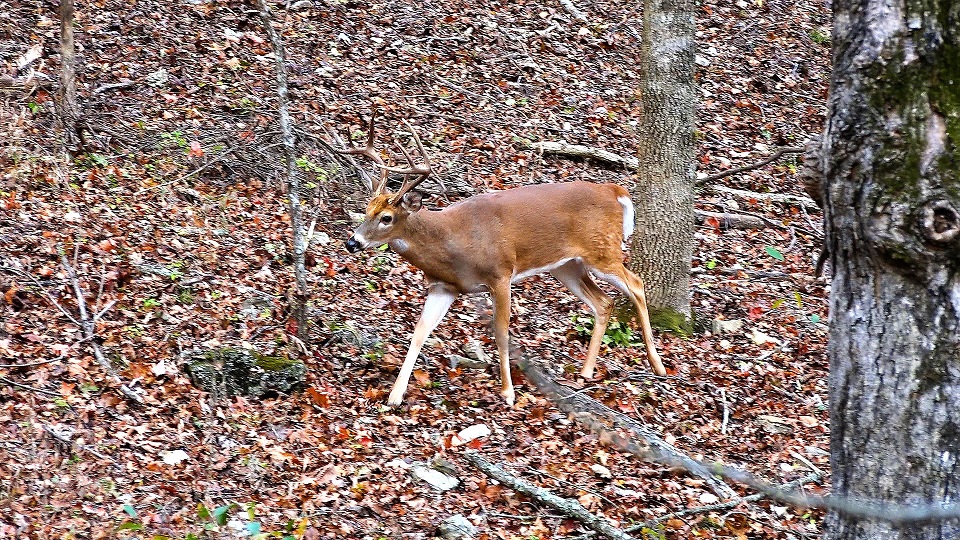
Deer population demographics and the associated behavior changes tend to change slowly. So, if you or someone you know hunted a specific area during the previous few years and observed significant rutting behavior during a specific week, chances are that will be a good week to schedule a hunt in that same area. However, if it was frosting every night when your friend was hunting there and it’s 20 degrees warmer than normal when you go don’t expect to see the same level of daytime deer activity.
If you’d like to learn more about this research or other research projects that relate to deer hunting and deer management, simply go to: http://www.sedsg.com/abstracts.asp and use the search tool to see what America’s best deer researchers have published about that subject.
There are a lot of myths about deer behavior. Those myths rarely help hunters fill tags.
Growing and hunting deer together,
Grant
Bow Hunters: What to Do When Deer Duck
We recently researched how fast a deer could potentially duck when an arrow is shot at it. The results were eye opening and changed the way we hunt! Here’s a summary of the findings:
To see the full explanation and the full video, Click HERE.
Note: Our apologies. Since we first made this blog post (which embeds/links to a short video we posted on Facebook) Facebook “covered” the video because they felt that it has sensitive content. So the only way to see it is actually on Facebook HERE or by clicking the link above or HERE to see the whole episode where the subject is covered more in-depth.
When Deer Hunting Should You Harvest Does? Here’s How To Know
A question I frequently receive this time of year is if does should be harvested. Like a lot of deer management subjects, doe management isn’t a one size fits all.
Biologically speaking, deer herds should be managed on a local or site-specific basis. This allows hunters/managers to adjust doe harvest to match local habitat quality against landowners/hunters’ goals.
For example, there could be a landowner that has production soybeans where the deer in that area are much more productive than deer just a few miles away where the habitat is composed of pasture and timber.
If the state management agency allows enough flexibility for landowners to adjust doe harvest as needed, hunters should next consider the quality of the local habitat during the two common stress periods of late summer and late winter.
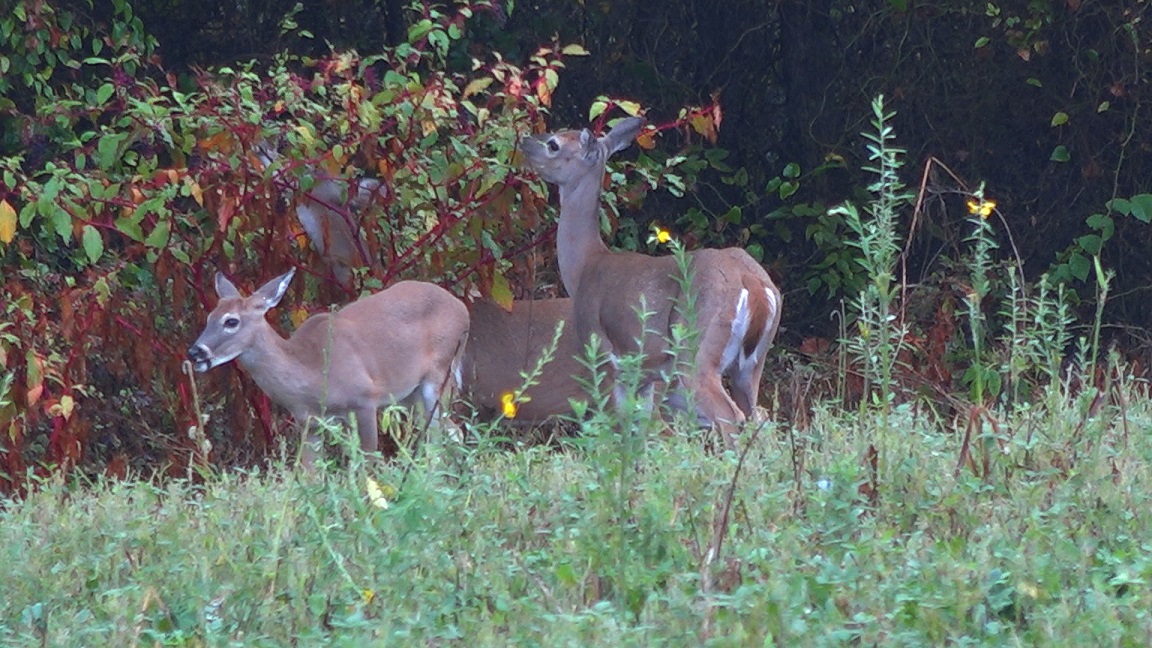
In most areas there usually isn’t a lot of precipitation during the late summer and during late winter deer are dependent on the forage that was produced during the preceding months. Now is not a good time to judge the amount of deer related to the habitat’s capacity to produce quality forage. Fall is harvest season and there should be an abundance of food now. There will likely be a huge difference in the amount of quality native and planted food now compared to late winter.
The most common mistake I see landowners make is allowing the deer herd to increase past the habitat’s potential to produce quality forage. Healthy deer herds can increase 20-30% annually. If doe harvest is postponed until the herd exceeds the habitat’s potential to produce enough quality browse, it will be too late and the herd won’t likely be reduced fast enough to prevent habitat damage.
It’s much better for the herd and habitat to monitor both the herd and habitat’s ability to produce quality forage and make small adjustments to the number of does harvested each year than to allow herds to exceed the habitat’s capacity to produce quality forage and both the herd and habitat are reduced in quality for years.
To improve or maintain herd quality, it’s important to manage the number of deer on a local level to match the habitat’s capacity to produce and maintain quality forage year-round.
That’s what we’ll be doing here on The Proving Grounds: managing the number of deer to match the habitat’s capacity. We’ve already started on this project, see Tyler take a doe in this video.
Enjoy Creation,
Grant



